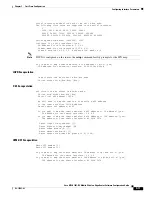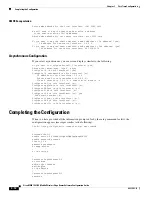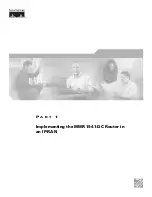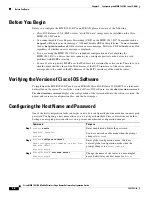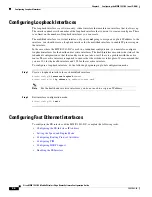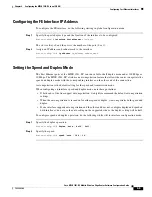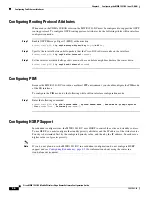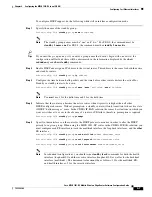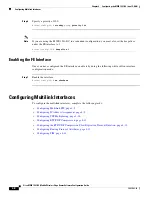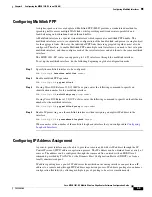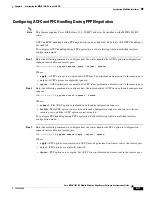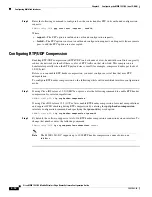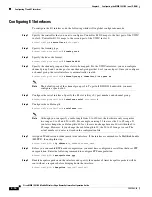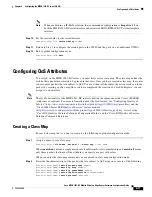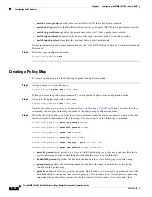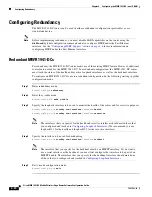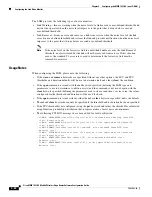
4-9
Cisco MWR 1941-DC Mobile Wireless Edge Router Software Configuration Guide
78-13983-08
Chapter 4 Configuring the MWR 1941-DC in an IP-RAN
Configuring Multilink Interfaces
Configuring Multilink PPP
As higher-speed services are deployed, Multilink-PPP (MLP) provides a standardized method for
spreading traffic across multiple WAN links, while providing multivendor interoperability and
load-balancing on both inbound and outbound traffic.
A Multilink interface is a special virtual interface which represents a multilink PPP bundle. The
multilink interface serves to coordinate the configuration of the bundled link, and presents a single object
for the aggregate links. However, the individual PPP links that are aggregated together, must also be
configured. Therefore, to enable Multilink PPP on multiple serial interfaces, you need to first set up the
multilink interface, and then configure each of the serial interfaces and add them to the same multilink
interface.
The MWR 1941-DC router can support up to 16 T1 interfaces through the multilink interface.
To set up the multilink interface, do the following beginning in global configuration mode:
Step 1
Specify the multilink interface to be configured.
RPM-3(config)#
interface multilink
number
Step 2
Enable multilink PPP operation.
RPM-3(config-if)#
ppp multilink
Step 3
If using Cisco IOS Release 12.3(15)MC2a or prior, enter the following command to specify an
identification number for the multilink interface.
RPM-3(config-if)#
multilink-group
group-n
umber
If using Cisco IOS Release 12.3(11)T or later, enter the following command to specify an identification
number for the multilink interface:
RPM-3(config-if)#
ppp multilink group
group-n
umber
Step 4
Enable IP processing on a the multilink interface without assigning an explicit IP address to the
interface.
RPM-3(config-if)#
ip unnumbered loopback
n
umber
Where
number
is the number of the multilink loopback interface that you configured in
Configuring
Loopback Interfaces
.
Configuring IP Address Assignment
A point-to-point interface must be able to provide a remote node with its IP address through the IP
Control Protocol (IPCP) address negotiation process. The IP address can be obtained from a variety of
sources. The address can be configured through the command line, entered with an EXEC-level
command, provided by or the Dynamic Host Configuration Protocol (DHCP), or from a
locally administered pool.
IP address pooling uses a pool of IP addresses from which an incoming interface can provide an IP
address to a remote node through IPCP address negotiation process. IP address pooling also enhances
configuration flexibility by allowing multiple types of pooling to be active simultaneously.
Summary of Contents for MWR 1941-DC - 1941 Mobile Wireless Router
Page 49: ...P A R T 1 Implementing the MWR 1941 DC Router in an IP RAN ...
Page 50: ......
Page 107: ...P A R T 2 Implementing the MWR 1941 DC Router in a Cell Site DCN ...
Page 108: ......

